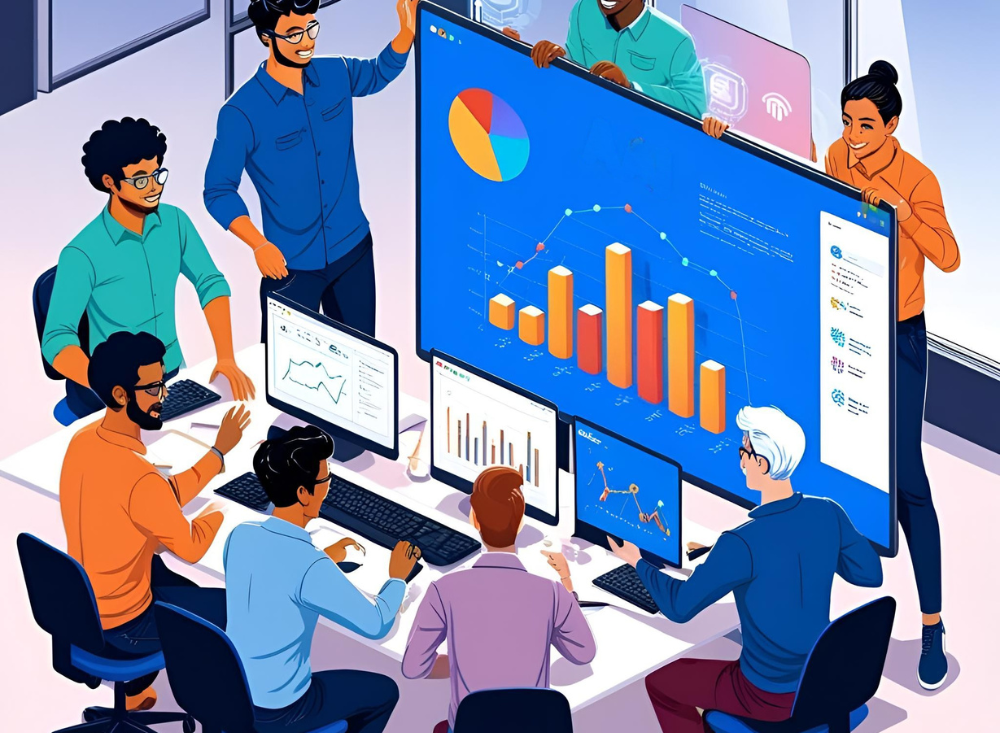
Introduction
In today’s data-driven world, graphs and network visualizations have become fundamental components of modern applications — from social networks and recommendation engines to financial fraud detection and IoT systems. However, testing these complex graph structures presents unique challenges that traditional testing methods struggle to address effectively.
This is where Artificial Intelligence (AI) revolutionizes graph testing. By leveraging machine learning, computer vision, and predictive analytics, AI enables smarter, faster, and more accurate validation of graph-based systems. This guide explores how AI enhances graph testing, overcoming traditional limitations while introducing powerful new capabilities.
Challenges of Traditional Graph Testing Methods
Before examining AI’s role, it’s important to understand why conventional test automation tools fall short when testing graphs:
1. Graph Complexity
- Graphs consist of nodes (vertices) and edges (connections), often with dynamic relationships.
- Traditional scripts struggle with non-linear structures, requiring extensive manual effort.
- 2. Visual Complexity
- Graph visualizations (e.g., force-directed, hierarchical, or Sankey diagrams) must render correctly across devices.
- Pixel-based testing fails with dynamic layouts where node positions shift.
- 3. Graph Traversal Challenges
- Testing all possible paths (e.g., shortest path algorithms) is computationally expensive.
- Manual testers often miss edge cases in deeply nested graphs.
- 4. Dynamic and Complex Data Relationships
- Real-time data (e.g., stock market graphs) changes continuously, breaking static test validations.
- 5. Edge Cases and Path Coverage
- Ensuring all critical paths (e.g., cycles, disconnected nodes) are tested is difficult without AI-guided prioritization.
- 6. Difficulty in Predicting Outcomes
- Graphs with probabilistic behaviors (e.g., recommendation engines) produce non-deterministic results.
- 7. Performance Issues with Large Graphs
- Testing massive datasets (e.g., LinkedIn’s social graph) leads to slow execution and timeouts.
- 8. Lack of Intelligent Test Case Generation
- Traditional tools can’t auto-generate meaningful test scenarios for evolving graphs.
9. Challenges in Detecting Graph Anomalies
- Hidden patterns (e.g., fraud rings in transaction graphs) require anomaly detection beyond rule-based checks.
How AI Enhances Graph Testing
AI addresses these challenges through advanced techniques:
1. Automated Test Case Generation
- AI analyzes graph schemas and generates test cases covering critical paths, loops, and edge cases.
- Example: Auto-creating tests for a recommendation engine’s node connections.
- 2. Graph Traversal Optimization
- Reinforcement Learning (RL) optimizes traversal paths, reducing test execution time.
- Example: Prioritizing testing for high-risk financial transaction paths.
- 3. Anomaly Detection
- Unsupervised ML models (e.g., clustering) detect abnormal node/edge patterns.
- Example: Identifying fraudulent clusters in payment networks.
- 4. Predictive Testing
- Forecasts potential failures based on historical graph behavior.
- Example: Predicting database overloads in graph-based analytics dashboards.
- 5. Automatic UI Testing of Graph Visualizations
- AI-powered visual testing validates rendering accuracy across browsers/devices.
- Example: Ensuring a D3.js force-directed graph renders correctly on mobile.
- 6. Real-Time Graph Rendering Validation
- Computer vision checks dynamic graph layouts (e.g., node repositioning animations).
- Example: Validating real-time network topology maps in DevOps tools.
- 7. Interaction and Usability Testing
- AI simulates user interactions (zooming, panning, node clicks) to verify responsiveness.
- Example: Testing a medical diagnosis graph’s interactive filters.
- 8. Visual Regression Testing
- Detects UI discrepancies in graph styling (colors, labels, tooltips).
- Example: Flagging misplaced edges in a genealogy tree visualization.
Automating Graph Testing Using AI: A Step-by-Step Approach
1. Test Creation in Natural Language
- AI converts plain English (e.g., “Test path between User A and User B”) into executable test scripts.
- Eliminates the need for coding expertise.
- 2. AI Vision for Graph Validation
- Computer vision algorithms compare screenshots against baselines, ignoring non-critical rendering differences.
- Handles dynamic graph layouts better than pixel-diff tools.
- 3. Self-Healing Tests
- AI auto-corrects test scripts when graph structures change (e.g., new node types added).
- Reduces maintenance effort by up to 70%.
- 4. Visual Regression Testing
- Detects visual bugs like:
- Misaligned node labels
- Overlapping edges
- Incorrect tooltip positioning
- 5. Contextual Understanding
- NLP models interpret graph semantics (e.g., “Central nodes should be highlighted red”).
- Ensures tests align with business logic.
Key Benefits of AI-Powered Graph Testing
✅ Faster Test Creation — Generate thousands of test cases in minutes.
✅ Higher Accuracy — Detect subtle anomalies missed by manual testing.
✅ Reduced Maintenance — Self-healing tests adapt to graph changes.
✅ Cross-Platform Validation — Test graph UIs consistently across browsers/devices.
✅ Predictive Risk Analysis — Proactively identify failure-prone areas.
Real-World Use Cases
1. Social Networks
- Testing friend recommendation graphs (e.g., Facebook’s “People You May Know”).
- 2. Financial Systems
- Validating transaction money flows for fraud detection.
- 3. Healthcare
- Ensuring patient-disease relationship graphs display correctly in diagnostic tools.
- 4. Logistics
- Verifying supply chain network maps update in real time.
- 5. Cybersecurity
- Detecting malicious node clusters in IP traffic graphs.
Conclusion
Graph testing is evolving from a manual, error-prone process to an AI-driven, automated discipline. By leveraging machine learning, computer vision, and natural language processing, QA teams can now:
✔ Test complex graph structures with minimal effort.
✔ Validate real-time, dynamic visualizations accurately.
✔ Detect hidden anomalies proactively.
✔ Reduce test maintenance by 70% or more.
As graphs continue to power critical applications — from healthcare to finance — AI-powered testing will become indispensable for delivering flawless user experiences. Organizations adopting these techniques today will gain a competitive edge in quality, speed, and innovation.